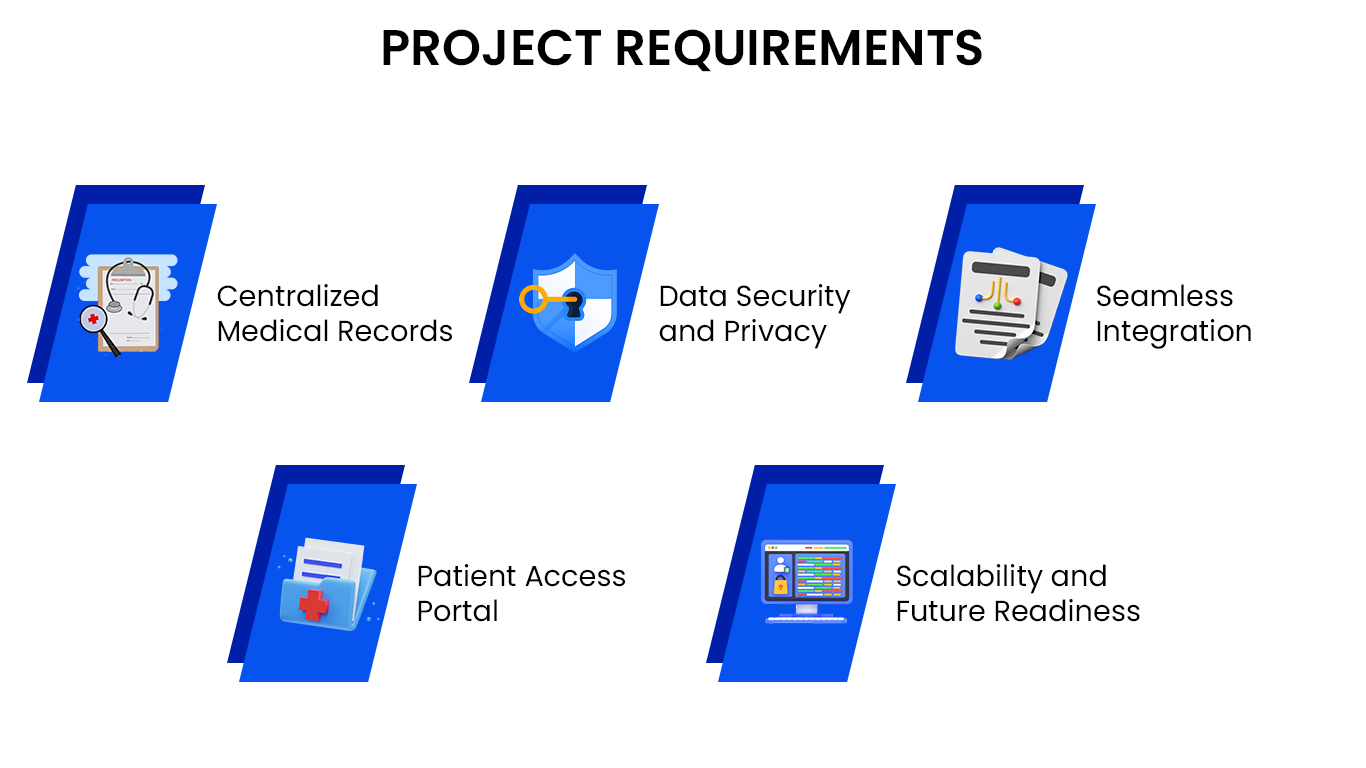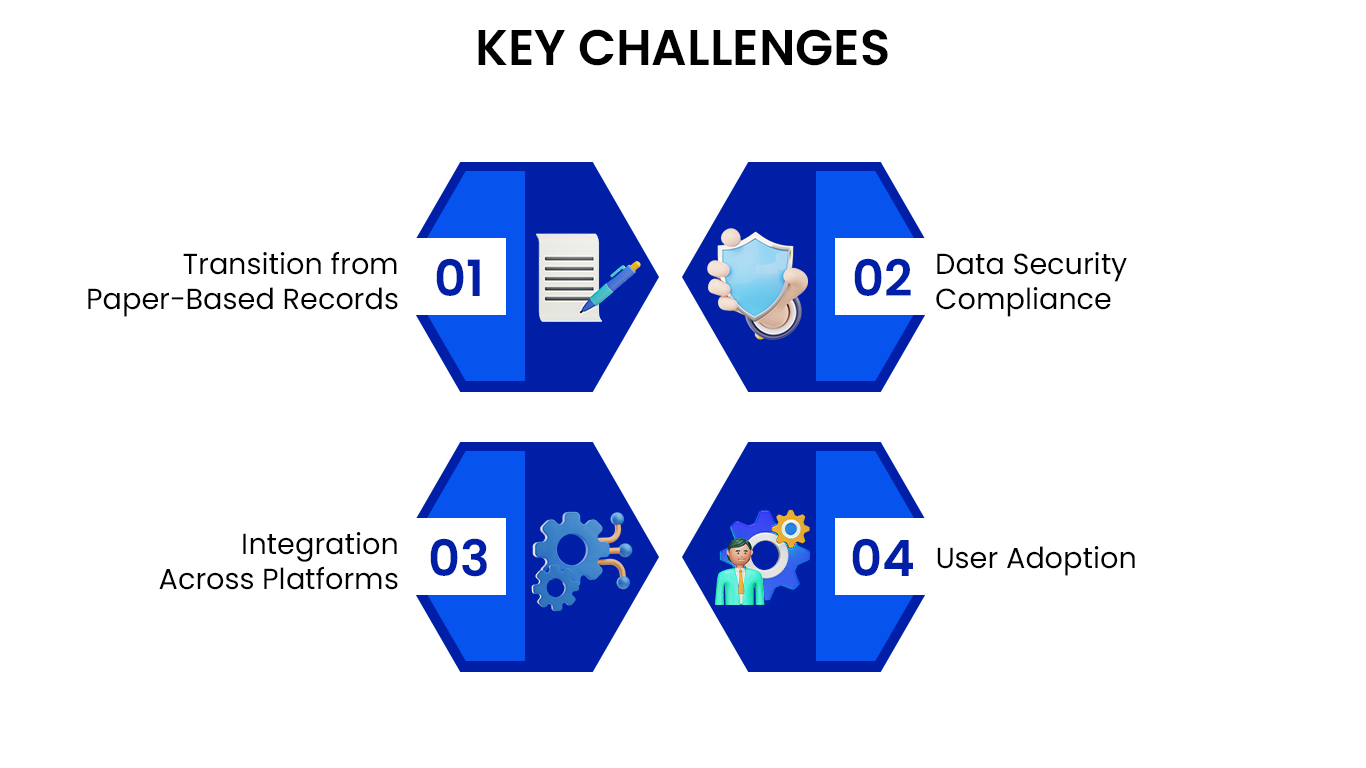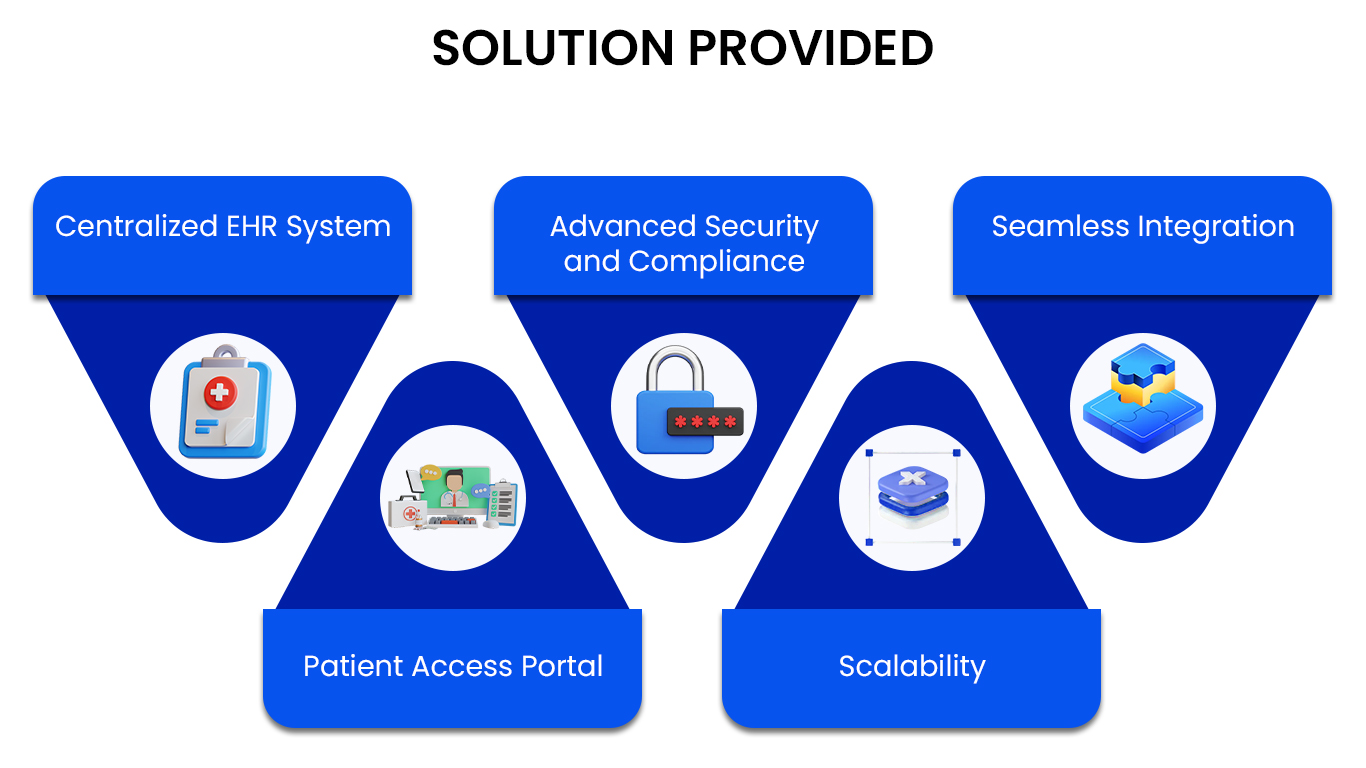Client Overview
Zenesys partnered with a major healthcare provider in Canada to help implement a robust Electronic Health Records (EHR) system.
The hospital, known for its comprehensive care and diverse patient base, needed a solution that could streamline patient record management, improve accessibility, and ensure the highest levels of data security. Their goal was to enhance patient care by improving how medical information was stored, accessed, and shared among healthcare professionals.
Initial Client Discussions
During the early stages of discussions, the hospital highlighted several pain points with their existing paper-based system. Medical records were often scattered across departments, making it difficult for healthcare providers to access crucial patient information promptly.
The hospital's leadership team stressed the importance of moving to a fully digital system that was not only user-friendly but also compliant with strict data privacy laws in Canada, including regulations such as PIPEDA (Personal Information Protection and Electronic Documents Act).
Another significant concern was the integration of the EHR system with their existing medical devices and systems. They needed a solution that could seamlessly pull data from various sources like imaging systems, lab reports, and patient monitoring devices, allowing healthcare providers to access all relevant information in one place.
Project Requirements
The hospital's specific needs and requirements were identified during the client consultations:

- Centralized Medical Records: The EHR system is needed to consolidate patient data from various departments and allow healthcare providers easy access to comprehensive patient histories.
- Data Security and Privacy: The solution had to comply with Canadian healthcare regulations to ensure that patient data was protected at all times, especially with regard to access controls and encryption.
- Seamless Integration: The system had to integrate with existing hospital infrastructure, including medical devices, diagnostic equipment, and lab management systems.
- Patient Access Portal: The hospital requested a feature that would allow patients to access their medical records, lab results, and appointment schedules via a secure web portal.
- Scalability and Future Readiness: The system had to be future-proof, allowing the hospital to scale as it expanded and potentially incorporate AI-driven analytics for predictive healthcare services.
Key Challenges

- Transition from Paper-Based Records: One of the biggest challenges was migrating decades of paper-based medical records into a digital format while ensuring data accuracy.
- Data Security Compliance: With sensitive patient information at stake, the solution had to meet the highest standards of data security while adhering to Canadian healthcare laws.
- Integration Across Platforms: Ensuring the EHR system integrated seamlessly with existing diagnostic tools and patient monitoring systems posed a technical challenge.
- User Adoption: The hospital was concerned about the learning curve for healthcare providers who were accustomed to traditional methods. Ensuring smooth adoption and training for staff was essential.
Solution Provided
After extensive discussions and a detailed understanding of the hospital’s requirements, Zenesys delivered a custom EHR solution that addressed the hospital’s needs.

Centralized EHR System: Zenesys developed a user-friendly platform that consolidated patient data across departments.
This enabled doctors, nurses, and other healthcare professionals to access comprehensive patient records in real-time, improving diagnosis and treatment outcomes.
Advanced Security and Compliance: Zenesys ensured that the EHR system was fully compliant with PIPEDA and other local healthcare data protection regulations.
The system featured role-based access controls, meaning only authorized personnel could access certain types of information. Additionally, the EHR was encrypted end-to-end to ensure that patient data remained protected, both at rest and in transit.
Seamless Integration: The EHR system was designed to integrate seamlessly with the hospital’s existing infrastructure.
Data from diagnostic devices such as MRI scanners, X-ray machines, and laboratory systems was automatically imported into the EHR, giving healthcare providers access to all critical information in one place. This integration also enabled faster and more accurate diagnoses.
Patient Access Portal: A secure patient portal was developed, allowing patients to view their medical records, upcoming appointments, and lab results. This increased patient engagement and enabled them to take more control over their healthcare journeys.
Scalability: Zenesys designed the system to be scalable, ensuring that as the hospital expanded or adopted new technologies, the EHR system could easily grow to accommodate future needs.
Need More Than Just an EHR?
If you're thinking beyond electronic records and want to build a fully integrated healthcare platform, we can help. From patient engagement to remote monitoring, our healthcare app development services cover it all.
Explore Healthcare App SolutionsResults
The implementation of the EHR system transformed the hospital’s operations. Healthcare providers benefited from immediate access to comprehensive patient data, which significantly improved the speed and accuracy of patient diagnosis and treatment.
The integration with existing diagnostic tools allowed for quicker decision-making, particularly in emergency situations.
The hospital staff reported an improvement in workflow efficiency, as they no longer had to spend time tracking down physical records across different departments. This freed up more time for patient care, leading to higher patient satisfaction.
Patients also appreciated the new patient portal, which provided them with access to their own medical information, lab results, and appointment schedules.
The clear information and easy access allowed patients to be more involved in taking charge of their health care.

.webp?lang=en-US&ext=.webp)

.webp?lang=en-US&ext=.webp)

